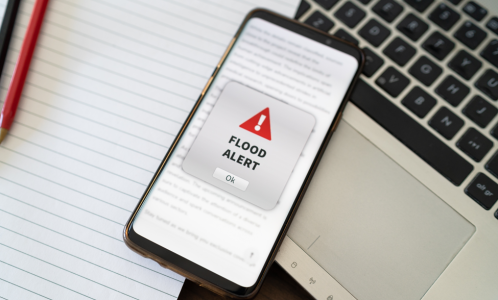Urgent tsunami alert from mobile app causes widespread confusion
By
- Replies 8
In an age where we rely on instant information to keep us safe and informed, receiving a tsunami warning on your mobile device can be heart-stopping.
For thousands of Australians, this became a reality when the Bureau of Meteorology (BoM) inadvertently sent out a tsunami warning through its app.
However, before panic could set in, it was quickly revealed that the alert was not what it seemed.
The notification reached Aussies as far inland as Canberra, read 'tsunami warning' and prompted users to click for more details.
This caused a stir among recipients, many of whom were understandably concerned about the potential for a natural and imminent threat to their safety.
The BoM quickly clarified the situation, explaining that the notifications were part of a test for the new tsunami early warning system software.
'The Bureau of Meteorology issued test verification posts on the BoM App between 11 am - 12 pm AEST on Wednesday, 25 September 2024, as part of the transition to the new tsunami early warning system software.
‘There is no tsunami threat to Australia,' the statement read.
Despite the clarification, the damage was done for many who believed the alert was genuine.
The BoM was criticised for not including the word 'test' in the notification title, which would have prevented unnecessary alarm.
As people processed the false alarm, social media was abuzz with reactions ranging from frustration to humour.
One user pointed out the importance of clear communication, saying, 'If you're going to send out “TSUNAMI ALERTS” as a test, maybe include that in the notification title and not just in the message you have to open in the app.'
Another joked about the situation's potential silver lining: 'I just got a warning that a tsunami is hitting in ten minutes—time to tell my boss what I really think.'
The BoM acknowledged the oversight and apologised for any confusion caused by the test.
They emphasised that such tests are crucial for ensuring the system's effectiveness in the event of a real tsunami threat.
'Testing is important to help the Bureau and partners prepare and plan for real tsunami threats,' the BoM wrote.
Queensland State Disaster Coordinator Shane Chelepy weighed in on the incident, stating that the alert should have been clearer.
'It did include the words that it was a test, but it was not as clear as it could have been,' he said.

Have you ever received a false alarm like this? How did you respond, and what measures do you take to stay calm and informed? Share your experiences and tips in the comments below.
For thousands of Australians, this became a reality when the Bureau of Meteorology (BoM) inadvertently sent out a tsunami warning through its app.
However, before panic could set in, it was quickly revealed that the alert was not what it seemed.
The notification reached Aussies as far inland as Canberra, read 'tsunami warning' and prompted users to click for more details.
This caused a stir among recipients, many of whom were understandably concerned about the potential for a natural and imminent threat to their safety.
The BoM quickly clarified the situation, explaining that the notifications were part of a test for the new tsunami early warning system software.
'The Bureau of Meteorology issued test verification posts on the BoM App between 11 am - 12 pm AEST on Wednesday, 25 September 2024, as part of the transition to the new tsunami early warning system software.
‘There is no tsunami threat to Australia,' the statement read.
Despite the clarification, the damage was done for many who believed the alert was genuine.
The BoM was criticised for not including the word 'test' in the notification title, which would have prevented unnecessary alarm.
As people processed the false alarm, social media was abuzz with reactions ranging from frustration to humour.
One user pointed out the importance of clear communication, saying, 'If you're going to send out “TSUNAMI ALERTS” as a test, maybe include that in the notification title and not just in the message you have to open in the app.'
Another joked about the situation's potential silver lining: 'I just got a warning that a tsunami is hitting in ten minutes—time to tell my boss what I really think.'
The BoM acknowledged the oversight and apologised for any confusion caused by the test.
They emphasised that such tests are crucial for ensuring the system's effectiveness in the event of a real tsunami threat.
'Testing is important to help the Bureau and partners prepare and plan for real tsunami threats,' the BoM wrote.
Queensland State Disaster Coordinator Shane Chelepy weighed in on the incident, stating that the alert should have been clearer.
'It did include the words that it was a test, but it was not as clear as it could have been,' he said.
Key Takeaways
- The Bureau of Meteorology issued test notifications that caused confusion, leading many Australians to believe there was a real tsunami threat.
- The notifications were part of testing for new tsunami early warning system software and there was no actual threat to Australia.
- Criticism was directed at the BoM for not making it clear in the notification title that the alerts were only tests.
- The BoM acknowledged and apologised for the confusion caused by the test and emphasised the importance of testing for preparedness.
Last edited by a moderator:








